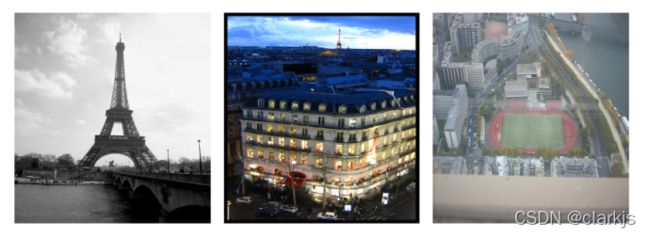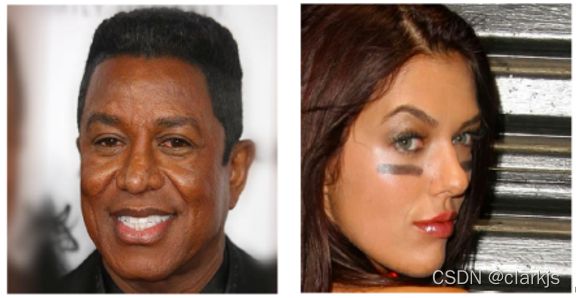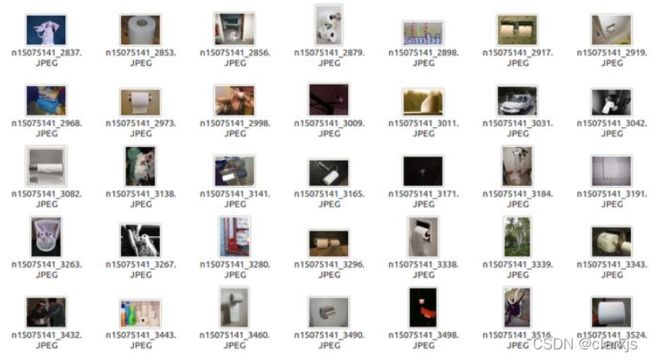Inpainting常用数据集
1. Places2
The Places2 dataset contains more than 10 million images in total with over 400 unique scene categories. This dataset has 5000 to 30,000 training images per class. Since this dataset contains a large number of real scenes, it is widely used in the field of Image Inpainting. As we can see, nearly 5 years, just in the CVPR, the dataset Places 2 has been used over 5 times.
(1)Image Inpainting with External-internal Learning and Monochromic Bottleneck
(2)Generating Diverse Structure for Image Inpainting With Hierarchical VQ-VAE
(3)PD-GAN: Probabilistic Diverse GAN for Image Inpainting
(4)UCTGAN: Diverse Image Inpainting based on Unsupervised Cross-Space Translation
(5)Contextual Residual Aggregation for Ultra High-Resolution Image Inpainting
2. CelebA
CelebA is the abbreviation of CelebFaces Attribute, which means celebrity face attribute dataset, which contains 202,599 face pictures of 10,177 celebrity identities, each picture is marked with features, including face bbox annotation box, 5 face features Point coordinates and 40 attribute markers. CelebA is provided by the Chinese University of Hong Kong. It is widely used in face-related computer vision training tasks. It can be used for face attribute identification training, face detection training, and landmark marking. Official website: http://mmlab.ie.cuhk.edu.hk/projects/CelebA.html

3. Paris Street View
Doersch et al. Doersch et al. (2012) developed the Paris Street View dataset from Google Street View Gronat et al.(2011); Anguelov et al. (2010) to examine which specific algorithms would work on a computational geographic task, and therefore enable automatic location of geoinformation features for a particular place or city. The images are distinctive and geographically informative, being based on a variety of architectural correspondences and geospatial scales (summarised appearance on one specific scale) of different cities from around the world. Two perspectives of images of 936 × 537 resolution are scraped automatically from a dense sampling of panoramas Gronat et al. (2011). Approximately 10,000 images per city were downloaded from 12 cities across the world, with a focus on Paris and suburban areas. A sample of the dataset is shown as follows:
StreetView Dataset 是 Google 于2014年发布的街景数据集,其包含 62058 个高质量街景图像,同时提供了图像的精确 GPS 坐标和罗盘方向,对于每个街景地标均分为 4 个侧视图和 1 个俯视图,且每个坐标拥有附加图像以显示重叠标记。

4. CelebA-HQ:
The CelebA-HQ dataset, developed by Karras et al. Karras et al. (2017) is developed from the from the CelebA dataset consisting of 30,000 high-quality images images of 1024 × 1024, 512 × 512 and 128 × 128 resolution. The original image resolution in the CelebA dataset varied from 43 × 55 to 6732 × 8984 with various backgrounds and processed by different image quality measures to ensure the image is on the central region Karras et al. (2017). To obtain the high-quality images for the CelebA-HQ, each JPEG image was processed using two pretrained neural networks. The authors then used the model proposed by Mao et al. Mao et al. (2016) to remove JPEG image artefacts which was combined with an adversarially-trained 4x super-resolution network for high-resolution images similar to that in Ledig et al. (2017). Padding and filtering were applied to extend the dimension of the images. The authors then used facial landmark annotations included in the original CelebA dataset to orientate and crop the images. The 202,599 subjects in the dataset were processed and analysed, resulting in the best 1024 × 1024 resolution image, and sorted to estimate the best quality images to select 30,000 images. To obtain the rest of the image sizes, we used a resizing tool by Karras et al. (2017).A sample of the dataset is shown as follows:

5. ImageNet
The ImageNet image dataset started in 2009, when Professor Li Feifei and others published a paper titled “ImageNet: A Large-Scale Hierarchical Image Database” on CVPR2009, and then the 7th ImageNet Challenge (2010) based on the ImageNet dataset. 2017), and after 2017, ImageNet was founded by Kaggle (the Kaggle company was founded in Melbourne in 2010 by co-founder and CEO Anthony Goldbloom, mainly for developers and data scientists to host machine learning competitions, host databases, write and platforms for sharing code) continue to be maintained.A sample of the dataset is shown as follows:
